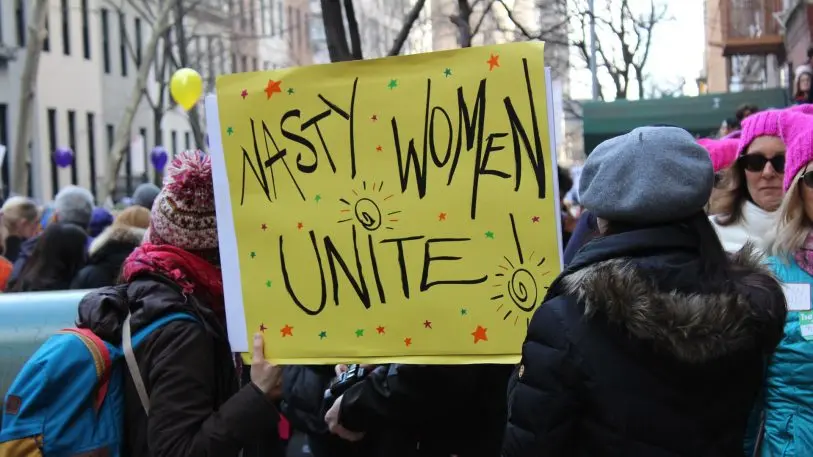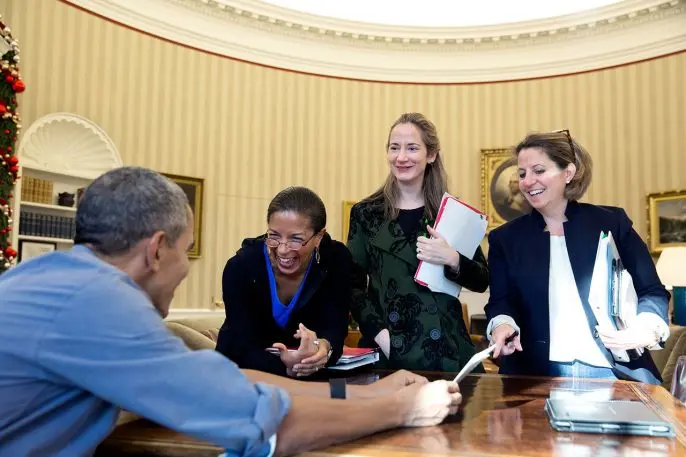More than 25 years ago, 1992 was dubbed “The Year of the Woman” when America took notice of Anita Hill’s treatment during the Clarence Thomas confirmation hearings and a record number of women were voted into Congress. Then again in 1997 when Madeleine Albright became the first female Secretary of State. Some called it “The Year of the Woman” when the Lilly Ledbetter Fair Pay Restoration Act was signed in 2009, or when Hillary Clinton became the first female candidate to represent a major party in a presidential election in 2016.
But this past year felt different.
The Women’s March last January became the largest single-day protest in American history. The summer blockbuster Wonder Woman, starring Gal Gadot and directed by Patty Jenkins, smashed box office records. And by October, brave women had broken their silence to topple titans of industry thought untouchable, sparking the #MeToo movement.
Yes, this past year felt different indeed, so what should we as marketers take away from this moment in time to be better equipped in 2018 to speak to the spirit of the age?
We’re Mad As Hell And We’re Not Going To Take It Anymore

Consumers launched a social campaign threatening to boycott Audi for running an ad in China that compared a bride to a used car. A beer marketed as the “first beer for her” with a pretty pink bottle, faced backlash on social media, where users called it sexist and stupid. On Medium, a blogger excoriated Billabong for imagery that appeared on the retailer’s website that juxtaposed an action shot of a male surfer with a bikini-clad woman in an oversexualized pose. The author ends her post by writing: “I’m your target market and you’re losing me. Do better.”
Branded faux pas that were looked past even a year ago won’t be tolerated today. If you pink-wash your marketing, or worse, tap into shallow stereotypes, expect female consumers to take notice–online and at the cash register.
Better Walk The Talk Or You’re Gonna Get Caught
Hoping to leverage the power of purpose-driven marketing, more brands are speaking to these issues in their communication, creating a wave of engagement and interest. But as many have learned, the world is just a Google search away from learning how deep a company’s commitment to women’s issues actually goes.
While I won’t debate the value of paying lip service versus actually serving female workers, if your board is all male or you’ve been systematically underpaying women, you can expect that to surface.
The Ad Industry Has A Big Glass House To Clean
Over the last couple of months, a thread started on the ad industry networking app Fishbowl, asked, “who are the Harvey Weinsteins of our industry?” The answers came in fast and furious. From every corner of our industry, women anonymously commented with their own #MeToo stories. Back in October, Cindy Gallop asked women to come forward, and the first few dominoes of men behaving badly began to fall. But we need to recognize that purge is far from over.
We All Need More Women In Leadership

Putting more woman in leadership positions at agencies (and brands) is absolutely the right place to start in reversing the trend of unconscious gender bias in advertising. Cindy Gallop stated it well in a Wall Street Journal podcast, “Our industry is dominated at the top, as every other industry is, by a closed loop of white guys talking to other white guys about other white guys. We have to break that loop.”
The future is only female if we make it that way. Millennial women aren’t a generation of Peggy Olsons willing to suffer the indignities of a boys’ club to get their work made. They’ll opt to make content in other spaces, where their voices are welcome. If we want today’s girls to be tomorrow’s brand leaders, we need to pave the way now by making it more inclusive and more representative.
Women Need To Commission, Create, And Approve More Creative Work
Having more women in leadership is the right and fair thing to do because this industry is full of talented, qualified women who have earned it. But it’s also pragmatic and smart. The more women who are “in the room where it happens,” the more authority and weight they’ll have behind their voices–and the fewer marketers will find themselves in avoidable potholes.
While men can be thoughtful culture makers and welcomed advocates, they will never be able to see the world through women’s eyes. Blind spots are unavoidable, but that isn’t a problem if you have women in the room who can call stereotypes and cultural misconceptions out when they see them. The same should be said about people of color. But when women are either absent or disempowered in the creation and approval of brand work, a marketer leaves themselves exposed to risk.
Junior female creatives can flag concepts that seem sexist or tone deaf to male creative directors, but if there’s fear of consequence or a culture of being overruled, little is solved. Honestly, who doesn’t think the marketers at Bic, Santo Mezquila, or Belvedere Vodka wish women were able to register complaints before their biggest missteps went live? This seems like a good time to reverse that trend.
Elizabeth Paul is the senior vice president of strategy at ad agency MullenLowe Boston.
Recognize your brand’s excellence by applying to this year’s Brands That Matter Awards before the early-rate deadline, May 3.
